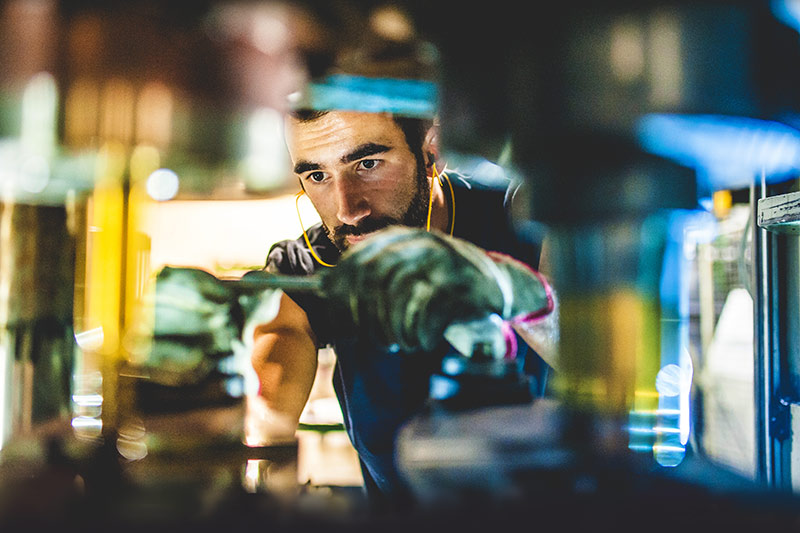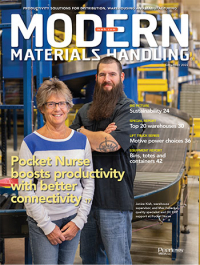Build a new MRO strategy for 2023
Here are some tips for getting past the current pain of inadequate MRO programs and making measurable gains on metrics from reduction in parts costs to gains in asset uptime. With recent MRO system failures fresh in your minds, now is the time to act.
Ever drive down a familiar road and notice there’s a gap where there used to be a building? And your next thought was: I drive past this every day but can’t remember what was here.
When Covid hit in early 2020, many MRO specialists found themselves in much the same spot when it came to replacement parts.
What they needed right then was out of stock. They knew what the part was, but didn’t have a part number to reorder it. They may not have even known where to order a new one. Suddenly, that part became a ghost. Meanwhile, the production line that needed the replacement part was down indefinitely.
That’s how Jim Owens, chief growth officer at SDI, describes the state of MRO after Covid hit. Modern spoke with him about building a new MRO strategy in 2023. Here’s the transcript of that interview.

Modern: How would you summarize where MRO stands today?
Owens: The world has changed, and it’s not going back to what it was before. There were many practices, or ‘non-practices’ would be more accurate, in MRO that are no longer tenable.
MRO has to align itself with Industry 4.0. It has to become technology enabled. That’s the only way to counter supply chain disruptions and deal with the exit of skilled labor. Technology is no longer a nice to have. For MRO, it is now a must have.
Three big forces in technology are enterprise asset management, supply chain management and engineering document management. These three are now merging and will create a new convergence in MRO.
Modern: That sounds like a lot all at once. How can companies deal with it all?
Owens: Companies can’t take it on all at one time, given where most are right now. They have to think big, start small and scale fast.
Some might think they can skirt these changes, but they can’t. We’re living in a time of change, uncertainty and disruption. People have to build systems that are adaptable and flexible. And they themselves also have to become more adaptable and flexible.
Modern: To be honest, it kind of tires me out just to hear you describe this at a fairly high level. That’s a lot of change. But first, maybe we would do well to remind ourselves of where MRO was pre-Covid.
Owens: Before the pandemic, supply chains worked differently than they do now. To start, they performed as intended. They were efficient and lean. Most of the time, supply chains were bigger than any disruptions that tried to interfere with all those built-in efficiencies.
Then the pandemic hit. Suddenly shutting down so much of the supply chain all at once created nothing short of a major shock to the system.
Then as we all started to come back, even though it was tentative, demand advanced faster than supply could. Suddenly, there were stockouts. And the whole bull whip effect came front and center and still has us in its grip, at least to some degree.
But what I just described summarizes the big picture of supply chains. It was also reflected in the MRO space.
The companies with the most advanced MRO programs knew what they typically bought and who they bought it from. But that was only part of the story. They didn’t necessarily have a bench of backup suppliers, if they had backup at all. So, when something wasn’t available from the usual supplier, it was really tough to find another supplier.
While they were stuck, many others were even more stuck. Many didn’t even know part numbers. How can you possibly run an MRO program if you don’t have part numbers?
Modern: Not well is probably a good guess. But we all know supply chains are getting closer to their old selves. Won’t this just kind of pass in time? You talked about technology earlier, but how far do companies actually have to go with building out integrated MRO systems full of valuable information?
Owens: Nice try. No. This won’t pass in time. We’re kind of playing a game of whack-a-mole here. It’s hard to predict out three or four months. We still have a whole lot of anomalies. And that should be motivation enough in itself for companies to rethink how they manage MRO.

Modern: What’s having the most impact on MRO these days?
Owens: Lead times, inflation and recession are three factors companies have little to no control over. But MRO inventory levels and procurement practices are most under their control. Or should be. And that’s were they need to start building their MRO strategy for 2023 and beyond.
Companies have to shift their thinking to start. The days are gone when the emphasis in MRO is on cost per part and how the company can exert leverage to lower that price even further.
Companies need to shift to thinking about MRO in the bigger corporate picture. How do MRO efficiencies and investments affect overall company performance? That’s way past cost per replacement part.
Now, MRO is all about risk management from the production line or shipping dock to the bottom line. There is a direct link. MRO is about risk management on a scale most companies have never considered.
And that’s true for even the most advanced companies that manage MRO through their enterprise resource planning (ERP) or enterprise asset management system. Too many of these companies have inadequate data, low functionality and poor visibility. In fact, all too often they keep stocking out of MRO parts and don’t know why.
Modern: So, the solution here is more technology and better data that can actually be used. Right?
Owens: Not exactly. Technology and data can’t be overlooked, for sure. But a comprehensive solution starts only when someone in the organization owns MRO and is held accountable for it. And I’m talking here about accountability not just for keeping equipment up and running. I’m also talking about accountability for the impact MRO overall has on the company’s bottom line. I said it earlier, but it’s worth repeating. Again and again.
We have to get away from the days when finance wanted no inventory or extremely low inventories at most. And the days when engineering would only accept the highest quality parts. That person who owns MRO has to set the parameters needed to keep equipment up and running regardless of whose silo gets dinged. MRO is a company survival issue and deserves that respect from others in the organization.
Modern: That sounds tough to do. What do you suggest?
Owens: First of all, we are at a great point right now, at the end of 2022, to start this. Recent failures and their consequences are firmly in people’s minds. Nobody wants to go back there. This is an ideal time for change.
An early step is to do a benchmark gap analysis. Some of the key data points here include: processes, workflows, KPIs, inventory, data and reporting analytics and technology already in place (see graphic, p. 42).
The ultimate goal is to identify risks within the MRO realm. And they range from that $100 part no one thought about to the new technician who needs more resources. For the latter, there are app-enabled engineering document management offerings that techs can access to find OEM manuals, parts lists, bills of materials and much more.
MRO also needs to be enabled to transcend silos. That’s both within the organization and outside.
Within the organization, look for limited technology enablement and back-office chaos that makes it tough to match work orders to purchase orders, for instance. Another flash point is limited formal supplier relationships and no visibility or control of parts spend, inventories or orders.
Another part of the benchmarking process is to cross over into other segments of industry and see what their practices are and how they can be applied here.
Modern: Those are all good technical tips, but what about the people side of the equation? What about the techs? Where do they fit in this new MRO world?
Owens: Think about this for a minute. The average age of an MRO tech today is 54. And rising. But for new techs that companies can find, they have to change how they onboard and train them. New training systems have to be built and new resources brought in. That app mentioned earlier is an example.
Modern: All of this sounds good, but what’s the payback? Have you documented any of this?
Owens: We sure have. Bringing MRO forward as we’ve discussed has several major impacts. Here are some:
- 0% to 15% reduction in parts costs;
- 10% to 25% reduction in wrench time;
- 20% boost in asset uptime;
- 30% improvement in first-time fix; and
- 100% gain in visibility and control.
Modern: Sounds like building a new MRO strategy in 2023 offers companies some real gains. Not sure how anyone can pass that up. Thanks for your time today, Jim.

Article Topics
MRO News & Resources
Learn from lift truck service history Avidbots showcases autonomous cleaning robots Traka exhibits modular lockers MRO Survey: Finding and keeping the best technicians 60 Seconds with Jordan Taft, Welder at Raymond Corporation Maintenance, Repair and Operations: Understanding the true condition of the equipment Predictive maintenance: Ready to launch More MROLatest in Materials Handling
Geek+ and System Teknik deploy PopPick solution for pharmacy group Med24.dk Beckhoff USA opens new office in Austin, Texas Manhattan Associates selects TeamViewer as partner for warehouse vision picking ASME Foundation wins grant for technical workforce development The (Not So) Secret Weapons: How Key Cabinets and Asset Management Lockers Are Changing Supply Chain Operations MODEX C-Suite Interview with Harold Vanasse: The perfect blend of automation and sustainability Consultant and industry leader John M. Hill passes on at age 86 More Materials HandlingAbout the Author
Subscribe to Materials Handling Magazine

Find out what the world's most innovative companies are doing to improve productivity in their plants and distribution centers.
Start your FREE subscription today.
April 2024 Modern Materials Handling

Latest Resources












